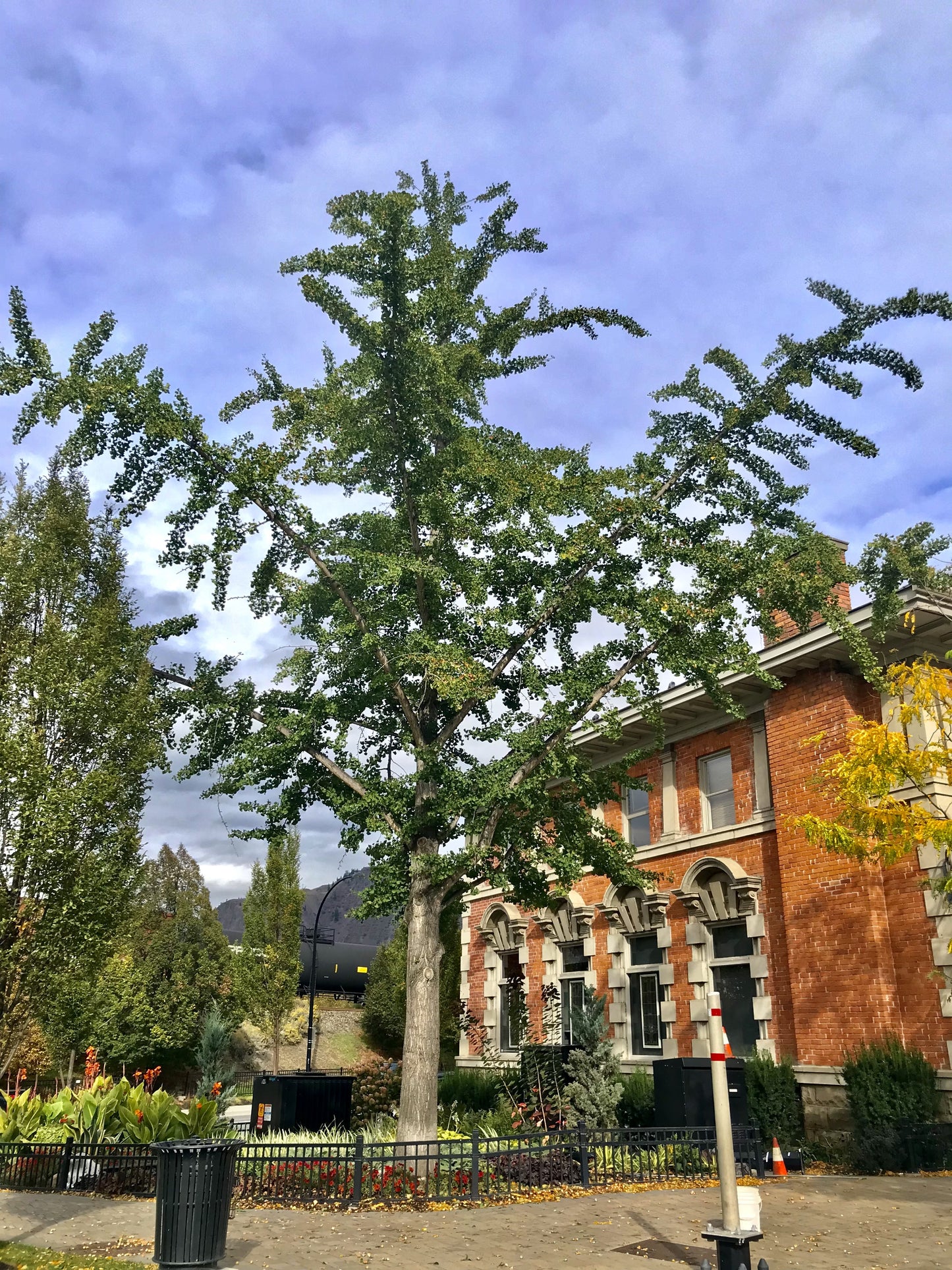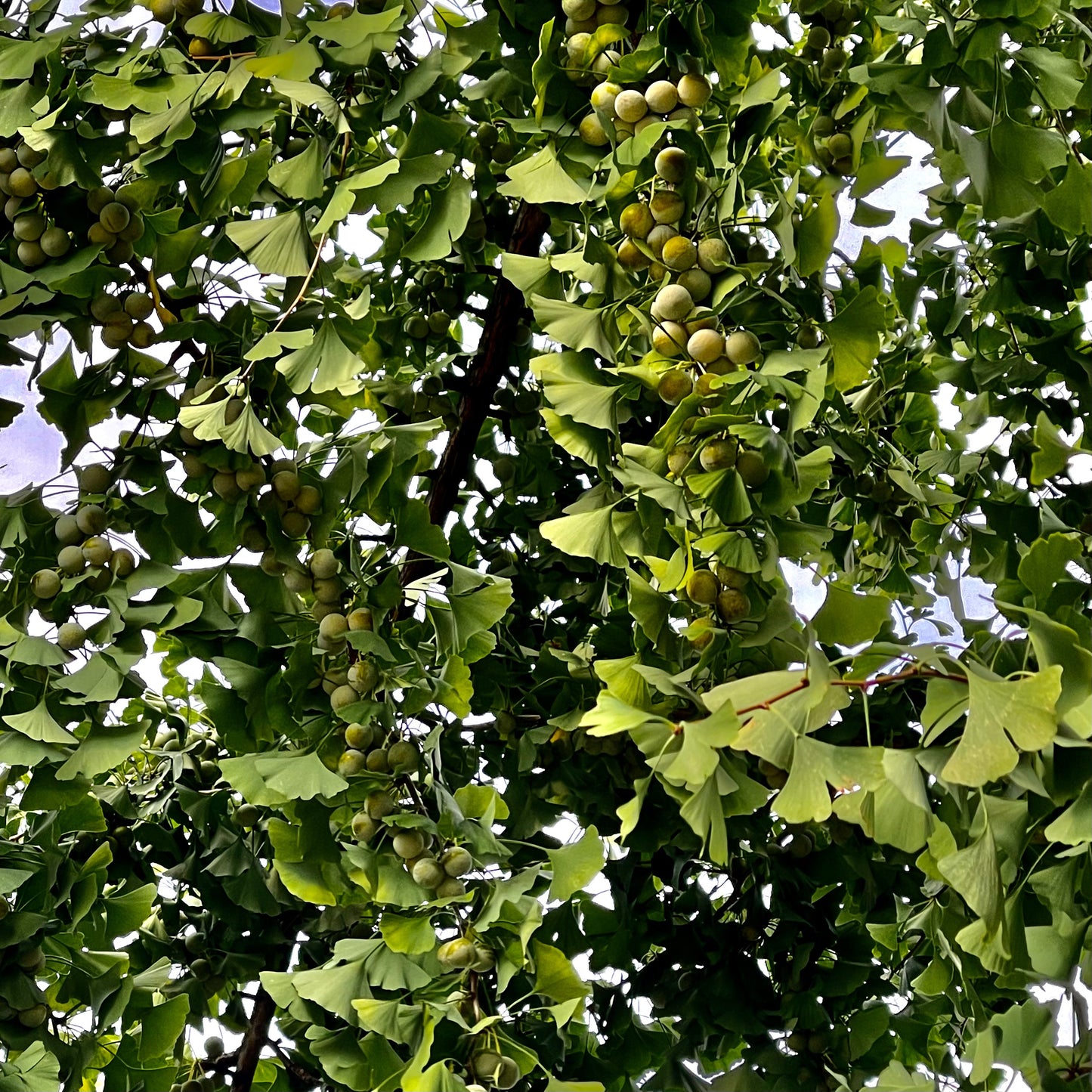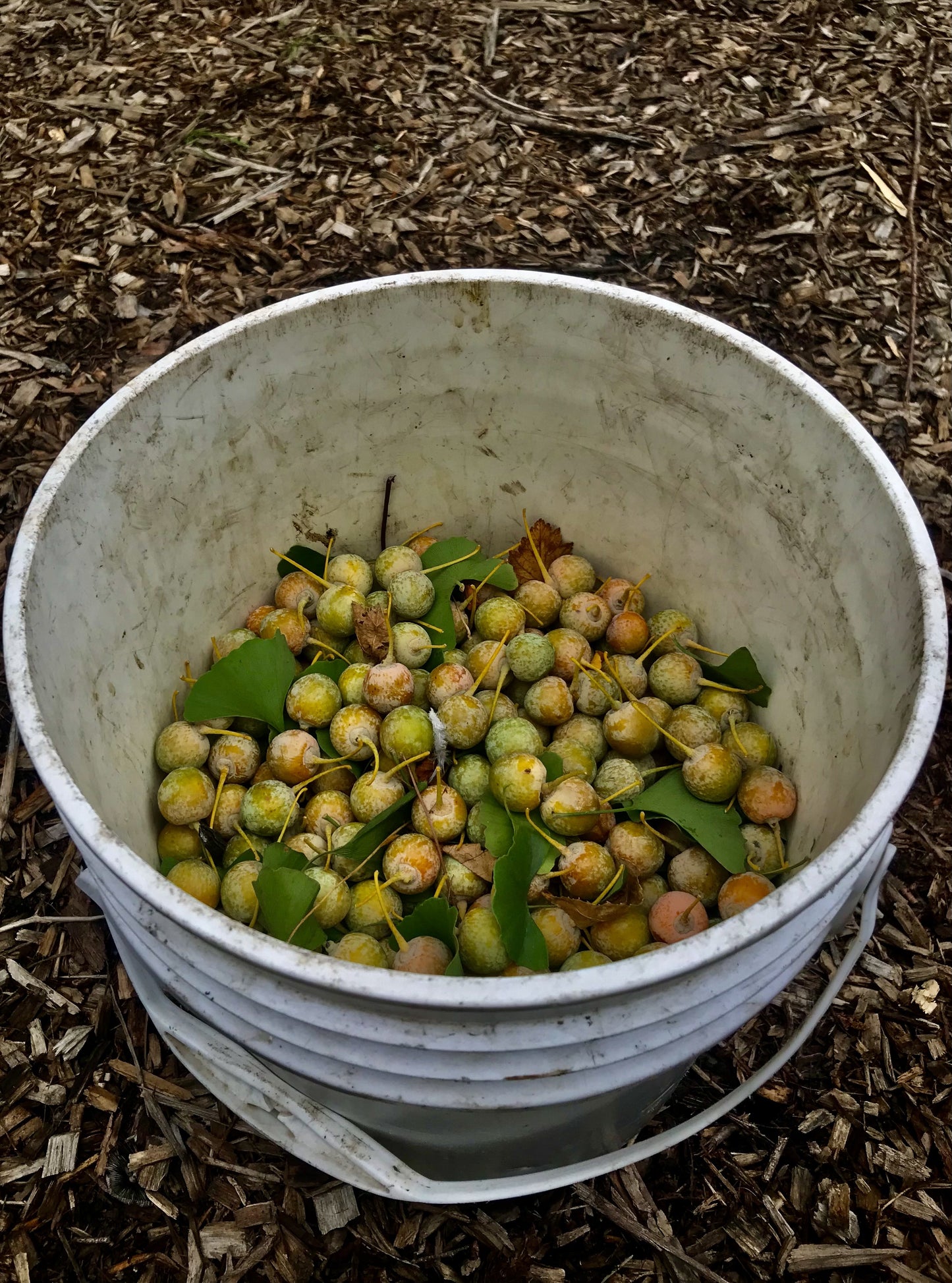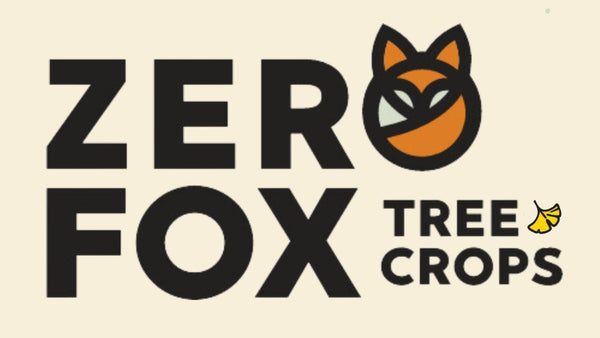Ginkgo (Ginkgo biloba)
Ginkgo (Ginkgo biloba)
Local Pickup Available in Harrop, BC
Couldn't load pickup availability
Why We Grow It
Why We Grow It
Ginkgo trees are a valuable addition to food forests and permaculture systems due to their resilience, multifunctionality, and long lifespan. Their nuts provide a nutritious food source, while their stunning foliage supports biodiversity by offering habitat and shade. The tree’s ability to thrive in challenging conditions, including urban and degraded environments, makes it an excellent choice for restoration projects and silvopasture systems. With minimal maintenance requirements and significant ecological and cultural contributions, Ginkgo biloba stands out as a timeless and practical tree for diverse landscapes.
How the Plant Grows
How the Plant Grows
Ginkgo grows as a tall, columnar tree with distinctive fan-shaped leaves that turn a brilliant yellow in fall. It grows steadily, averaging about 30 cm or more annually, and develops an open, pyramidal shape as it matures. Female trees produce small, fleshy seeds encasing edible nuts, while male trees remain fruitless. Its roots, while rubbery and prone to damage during transplanting, establish deeply, making the tree highly drought-tolerant over time.
Plant Size
Plant Size
Size at Maturity- Canopy layer. Grows to 50-70 feet tall with a spread of 30+ feet. First 20 years 30 feet, spread of 10 feet
Current Size- Large 6"-10", 1 year old seedling
Small Under 6", 1 year old seedling
Additional Info
Additional Info
Ginkgo biloba has been cultivated for centuries, valued for its medicinal and nutritional uses. Its nuts are an integral part of Asian cuisine and culture, appreciated for their mild, nutty flavor and high nutritional value. The leaves are widely used in Traditional Chinese Medicine to support cognitive function and circulation. Ginkgo is one of the most resilient tree species, capable of thriving in polluted urban environments where many other trees fail. Its ability to grow without fertilization or pruning adds to its low-maintenance appeal, making it a popular choice for parks, streetscapes, and food forests.
The Ginkgo tree, often called a living fossil, is a unique and resilient species unchanged for over 200 million years. Its fan-shaped leaves, golden fall color, and open pyramidal form make it an ornamental gem for urban and natural landscapes. Known for its urban resilience and stunning visual appeal, Ginkgo thrives in diverse conditions, requiring minimal maintenance. It holds historical significance as the original nut tree, producing edible nuts from female trees that are rich in starch, protein, and healthy fats. Additionally, its leaves are utilized in Traditional Chinese Practices as a memory aid.
Share



Plant Highlights
-

Water
Moderate water needs; drought-tolerant once established but benefits from consistent moisture during establishment
-

Pollination
Dioecious; female trees require a male counterpart for nut production.
-

Soil
Thrives in deep, well-draining soils; intolerant of excessively wet, compacted, or alkaline soils.
-

Years to Bear
Produces seeds after 15-20 years, depending on growing conditions and tree health.
-

Hardiness
Zone 3, tolerating temperatures as low as -40°C
-

Solar
Requires at least half a day of sunlight, though full sun is optimal for growth.
Subscribe to our emails
Lots of Free Growing Info. Be the first to know about new plants and exclusive discounts.









